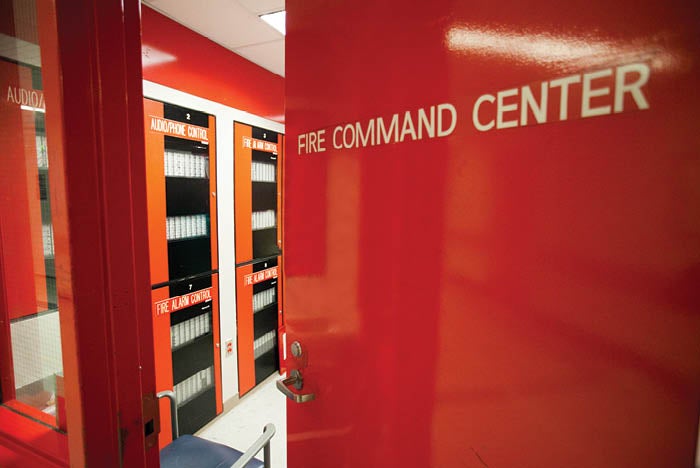Research project studies gaps and clearances around fire doors
Fire doors play an important role in keeping health care facility occupants and property safe. The gap size around the perimeter of doors, within the frame and between the bottom of the door and floor, can have an impact on the development of fire, smoke movement and the ability of fire doors to meet test standards. Hence, gap sizes are regulated.
Current regulations within the National Fire Protection Association’s NFPA 80, Standard for Fire Doors and Other Opening Protectives, for door clearances are based on information gathered several years ago, but they lack a strong technical basis. For instance, NFPA 80 currently allows a maximum bottom gap of 3/4 inch and a maximum of 1/8 inch along the vertical and top edges of swinging fire doors (with an additional 1/16 inch over-tolerance for steel doors). How were these heights determined?
Door clearances are one of the most frequently cited deficiencies on swinging fire doors. Under clearances are often found to be greater than the maximum allowable gap size because concrete slab floors tend to be irregular in terms of flatness and levelness. Door gaps larger than those permitted by the code may lead to fire penetrating the door or causing latches to fail if a door (or swinging doors), twists and warps due to the heat from fire.
To gain a better understanding of door gap sizes, the Fire Protection Research Foundation, the research affiliate of NFPA, is currently conducting fire door experimental testing. Visit the website for more information.
The American Society for Health Care Engineering is the principal sponsor of this research project and the goals are twofold.
The first step involves generic full-scale fire door testing with door assemblies that have door gap dimensions, as specified in NFPA 80. The second entails full-scale fire door testing of certain generic fire door assemblies with door gap dimensions larger than currently specified in NFPA 80. A final report is expected to be available later this year.
Sreenivasan Ranganathan, Ph.D., research project manager for the Fire Protection Research Foundation, Quincy, Mass. He can be reached at sranganathan@nfpa.org.





